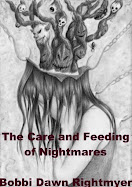

My home is siutated on a dead-end street in a rual neighborhood on one acre of land, so my backyard is typically quiet. But this past week a familiar buzzing noise started to resonated through the air, and the noise level just continues to increase. So what is invading the silence of my backyard ... the Cicadas have come to town.
Upon closer inspection of my back gardens, hundreds of Cicadas have taken roost in my trees and shrubs. There are dime-sized holes littering the dirt in my gardens where the Cicada larvae dug out to greet the warm weather and, of course, to reproduce. The Cicadas are everywhere - on the river birch, the snowball bush, the redbuds and the oaks, as well as the honeysuckle shrub that surrounds our property.
Normally, we will see less than a dozen Cicadas during a summer season, but this year's crop is a different story entirely. This morning, I saw dozens in many different areas of the gardens. And the sound they make is unbelievably loud, especially when they all start singing at the same time.
According to the UK College of Agriculture, these are periodical Cicadas because they come out only at designated times. KY has some Cicadas that emerge every 13 years, but the current crop is on a 17 year cycle. These Cicadas are called Brood XIV and there have been sightings in Lexington, Frankfort and Louisville, as well as Bowling Green and Cincinnati.
Cicadas normally appear in late April and early May, when the ground temperature reaches about 65 degrees. They emerge from underground and the Cicadas nymphs climb onto any vertical surface and hatch out of their shells. The Cicadas are harmless and do not bite or sting defensively.
The loud buzzing noise emminating from the Cicadas is actually the male Cicadas mating call. Once a male finds a partner, then the female finds a place to lay her eggs. Typically the females use a blade on the bottom of their abdomens to slice open tree branches and lay their eggs in the openings. The eggs will hatch in 6-10 weeks and the Cicada nymphs will fall to the ground and burrow into the soil. They then search for tree roots to feed upon. The larvae will then resurface again in the next 13 or 17 years.
And if you are concerned with Cicada carcasses littering your yard, don't be. The birds love these tasty bugs and they make quick work of any leftover Cicadas. Believe me, I have some of the fattest Robins in town.
So, if you miss the parade of Cicadas in your yard this year, don't fret - they will return, albeit many years down the road.






.jpg)














No comments:
Post a Comment